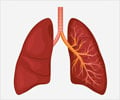A research team from Georgia Institute of Technology has developed a new multi-functional sensing system to investigate adenosine triposphate (ATP) release and its role in cystic fibrosis
A research team from Georgia Institute of Technology has developed a new multi-functional sensing system to investigate adenosine triposphate (ATP) release and its role in cystic fibrosis.
This patented technology adds recessed micro- and nano-electrodes to the tip of an atomic force microscope (AFM), creating a single tool that can simultaneously monitor topography along with electrochemical activity at the cell surface.Researchers will present information on the research on March 26 at the American Chemical Society’s 231st meeting in Atlanta during a session on new approaches in analytical chemistry.
The new multi-functional imaging technique will advance the study of biological samples, said Boris Mizaikoff, an associate professor at Georgia Tech’s School of Chemistry and Biochemistry and director of its Applied Sensors Lab.
“Conventional AFM can image surfaces, but usually provides limited chemical information,” he explained. “And though scanning electrochemical microscopy (SECM), another probing technique, provides laterally resolved electrochemical data, it has limited spatial resolution. By combining AFM and SECM functionality into a single scanning probe, our tool provides researchers with a more holistic view of activities at the cell surface.”
In addition to Mizaikoff and Kranz, the team also includes post-doctoral scholar Jean-Francois Masson and graduate student Justyna Wiedemair.
In the ATP study, which is sponsored by the National Institutes of Health and done in collaboration with Douglas Eaton at Emory University’s School of Physiology, the Georgia Tech team used the multi-scanning biosensors to study ATP release at the surface of live epithelial cells (cells that cover most glands and organs in the body). ATP, a chemical involved in energy transport, is of interest to medical researchers because elevated levels have been linked with cystic fibrosis, a disease that affects one out of every 2,500 people in the United States.
Advertisement
“Before you can identify what triggers the ATP release, we must be able to quantitatively measure the released species at the cell surface,” Mizaikoff said, noting that many pathological events involve the disruption of chemical communication and molecular signaling between cells, especially in the nervous system, lungs and kidneys.
Advertisement
During the same ACS session, the Georgia Tech team will also present findings of a related project.
A collaboration with Estelle Gauda at Johns Hopkins University and also supported by NIH grants, this project monitors ATP release at the carotid body. (The carotid body is a chemoreceptor that, among other functions, monitors oxygen content in the blood and helps control respiration.)
Chronic oxygen stress – too much or too little oxygen during early postnatal development – can lead to a deficiency in the amount of oxygen reaching body tissues in premature infants and newborn animals. But little is known about how oxygen stress affects regulatory networks and alters chemoreceptors. To gain insights, the Georgia Tech researchers will study ATP, which is among the signaling molecules released by the carotid body.
Researchers incorporate the same technology used for the multi-functional scanning probe. For this study, however, they have tailored the biosensor to work at a larger scale – microelectrodes are about 25 micrometers in diameter as opposed to the sub-micrometer dimensions of the combined AFM-SECM approach.
“There are a lot of emerging sensor technologies, but few have been adapted for routine use in medical research, which is one of the development goals at the Applied Sensors Lab,” Mizaikoff said. “As analytical chemists, we want to develop quantitative sensing devices that can answer important questions for clinical researchers.”
Source: Newswise






